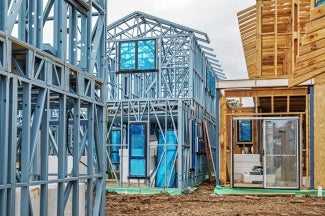
As tariffs heat up, the AEC impacts are uncertain
Risks include higher, more volatile costs of construction materials and products.
President Trump’s tariff policies became a bit clearer with the announcement on Wednesday, April 2 that a 10% baseline tariff —in addition to existing tariffs—will be imposed on virtually all imported goods. Several other countries were assessed with additional tariffs. While U.S. architects’ immediate concern is the impact of these tariffs on the AEC industries, the tariffs will impact not only the broader domestic economy, but virtually every international economy as well.
One of the key concerns is the lack of clarity by the administration of the ultimate goal of these tariffs. The administration has often mentioned encouraging growth in U.S. manufacturing and promoting greater reshoring as the objective. However, using these tariffs to negotiate lower tariffs from our trading partners, particularly partners with which we are running large trade deficits, is also commonly cited as a goal. Promoting more manufacturing activity would require that tariffs remain high for an extended period of time, while negotiating lower tariffs would suggest that, ideally, these tariffs would be significantly lower or even disappear in the near future. We haven’t yet seen if U.S tariffs will provoke a wider trade war, which could well produce a broader international downturn.
How can architecture firms hedge against the inherent risks of expanded tariffs?
These risks include volatile and higher costs of construction materials and products, as well supply chain disruptions for these materials, and products that create longer and more uncertain lead times. We’ve already seen significant increases in the cost of key inputs to construction, often based merely on the threats of future tariffs.
We saw during the pandemic that rising construction costs sometimes meant that construction bids came in over the proposed project budget, which could require architecture firms to redesign key components. To have a better sense of the underlying risk inherent with tariffs, firms should closely monitor key materials and products that will be specified in a project, the extent to which imports are relied on to fill this demand, the countries that provide significant shares of these imports, and how exposed these countries are to current and potential future tariffs.
Kermit Baker, Hon. AIA, is AIA's Chief Economist.
